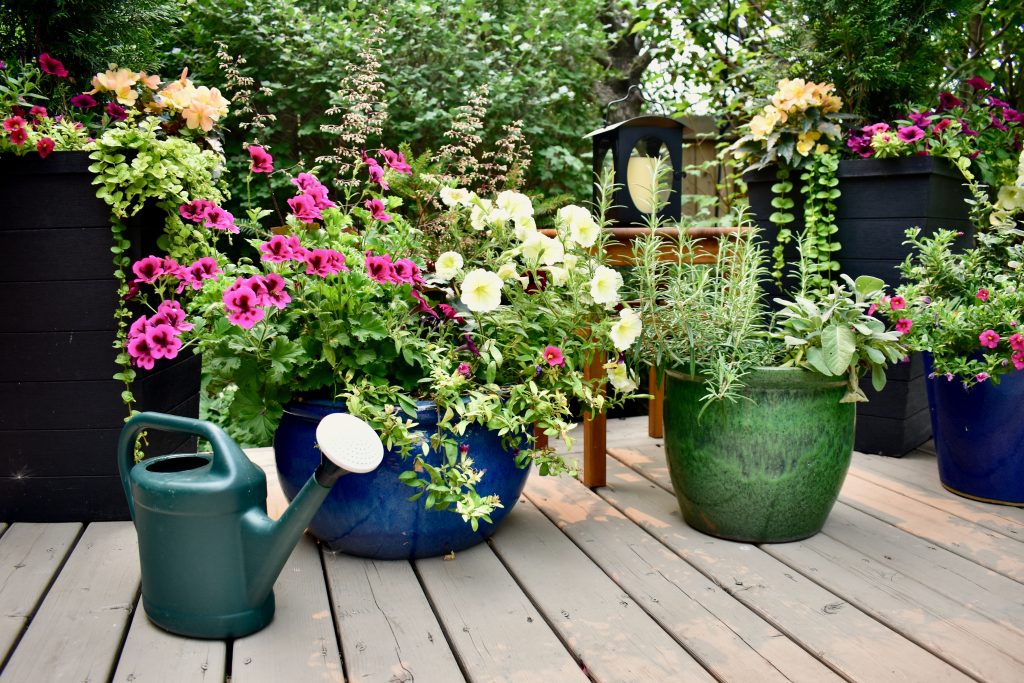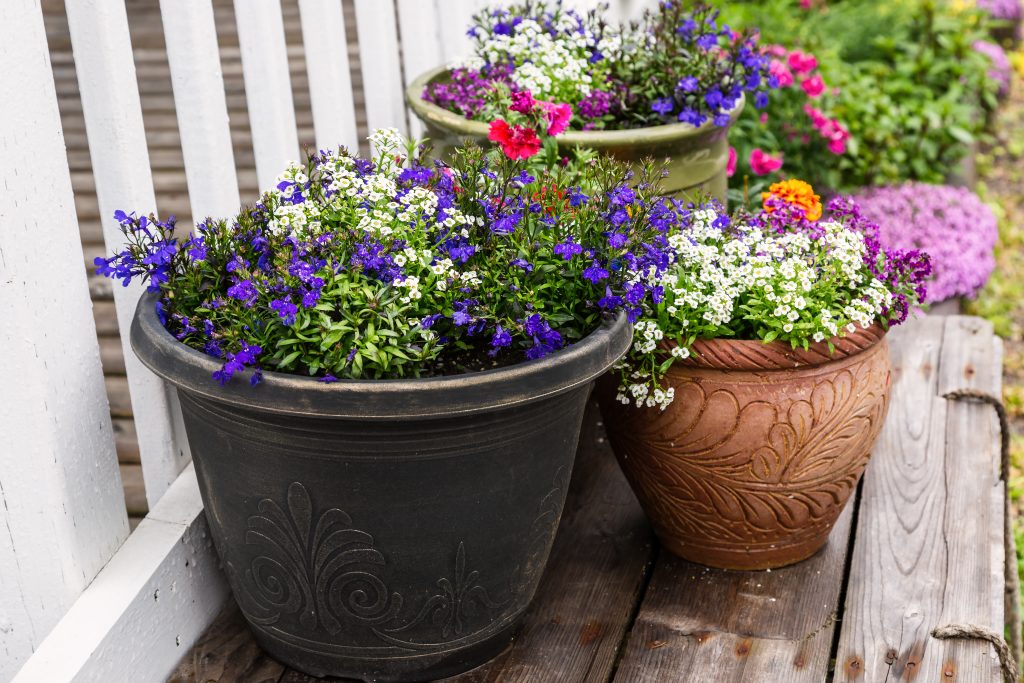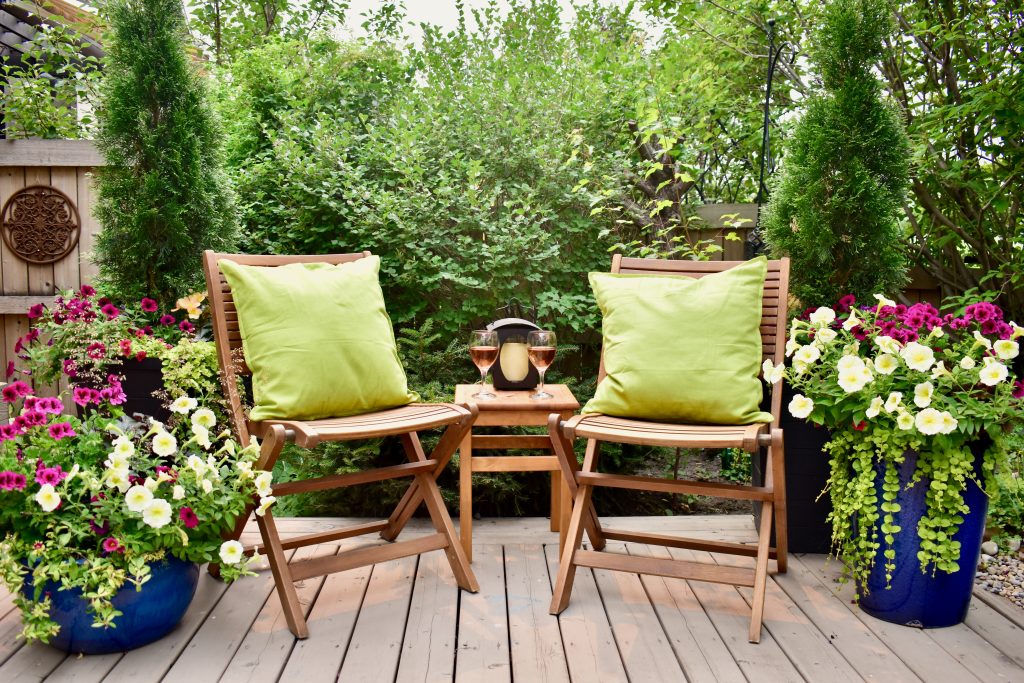Decking and Planter Ideas for UK Gardens

Decking and planters can completely change the look and feel of your garden, helping you create a practical and attractive outdoor space. Whether you’re looking to frame your patio with greenery or add height and interest to your deck, combining these elements is a great way to add to your home. Here are some ideas to inspire your next project.
Start by Choosing the Right Decking Boards

When choosing decking materials, consider how they will perform in the unpredictable UK weather. Hardwood decking, such as oak, balau, or ipe, are popular options for their strength, natural resistance to decay, and rich tones. They also weather beautifully over time, making them a reliable and attractive choice for long-term use.
Composite decking is another excellent option, offering the look of timber without the upkeep. Made from a blend of wood fibres and recycled plastics, it resists rot, fading, and warping, requiring little more than a quick clean to maintain its appearance. Its eco-friendly credentials make it an increasingly popular choice for sustainable garden designs.
For a more cost-effective solution, softwood decking can be ideal. Timbers like cedar and European larch are naturally durable and offer a light, clean finish that works well in contemporary settings.
The Perfect Planters for Your Deck or Patio

A well-chosen decking planter can soften the edges of wooden or composite decking, blending it even more so with the natural surroundings of your garden or patio.
- Ceramic planters are an excellent choice for this. Their rich glazes and handcrafted feel add a pop of colour and texture, making them perfect for patios and decks with a traditional or Mediterranean aesthetic. Arrange them in clusters of varying heights to draw the eye and add depth.
- Corten steel planters are ideal for contemporary spaces, offering a distinctive weathered look that ages gracefully. Their clean lines and rustic tones pair beautifully with composite decking or modern hardwood designs. Consider using these as bold focal points or along the perimeter of a deck to create defined zones.
- Wooden planters complement timber decking perfectly, offering an unbeatable and entirely natural look. They’re ideal for framing entrances or adding greenery along railings.
How to Position Planters on Decks and Patios

When placing planters, aim for balance and flow. Groupings of odd numbers create a natural feel, while a mix of tall and trailing plants can add layers of interest. Place larger planter boxes in corners or against walls for structure, and use smaller pots to fill gaps or line pathways. With careful arrangement, planters can transform your deck into a vibrant, welcoming space.
Styling Tips for Combining Decking and Planters
One popular design idea is to integrate planter boxes directly into the deck structure. Built-in planters can frame seating areas or act as natural dividers, providing both greenery and architectural interest.
For a cohesive look, consider matching your decking colours with planter materials. For example, hardwood decking pairs beautifully with natural wooden planters, while composite decks work well with corten steel or ceramic planters. A consistent palette ties the space together.
Move With the Seasons
In spring, use bright blooms like tulips or daffodils to bring energy to the space. In summer, lush greenery and cascading plants like petunias can create a tropical feel. As autumn arrives, grasses and late bloomers like chrysanthemums can add warmth, while evergreens provide structure and colour through the winter months.
Three Important Things to Consider
- Decking Maintenance: Regular cleaning is essential to keep your decking boards in top condition. For hardwood decking, apply a wood oil to preserve its natural tones and protect it from the elements. Composite decking, known for its low-maintenance qualities, generally requires just a periodic wash with soapy water to remove dirt and algae.
- Planter Box Drainage: Planters placed on decking need adequate drainage to prevent water pooling, which can lead to rot. Choose planter boxes with built-in drainage holes and raise them slightly off the deck using pot feet or saucers. This allows water to flow freely, protecting both the planters and the decking boards.
- Preventing Stains: Water runoff and soil can leave unsightly stains on decking, especially under planters. Using drip trays or liners inside planter boxes is a simple way to catch excess water. Alternatively, placing planters on raised platforms or stands prevents direct contact with the deck, reducing the risk of stains. For extra protection, consider applying a water-resistant finish or decking oil to create a barrier against moisture.
Bring Your Decking and Planters Together

Explore our extensive range of high-quality decking boards and stylish planters – whether you’re planning a full garden makeover or a simple refresh, our team is here to help. Contact us for expert advice or browse our collection online to find everything you need for your garden project.
Get a Quote
Looking for advice or have a question? Fill out our quick form below and we'll put you in touch with the right person in our team! We'll get back to you by the end of the next working day.


